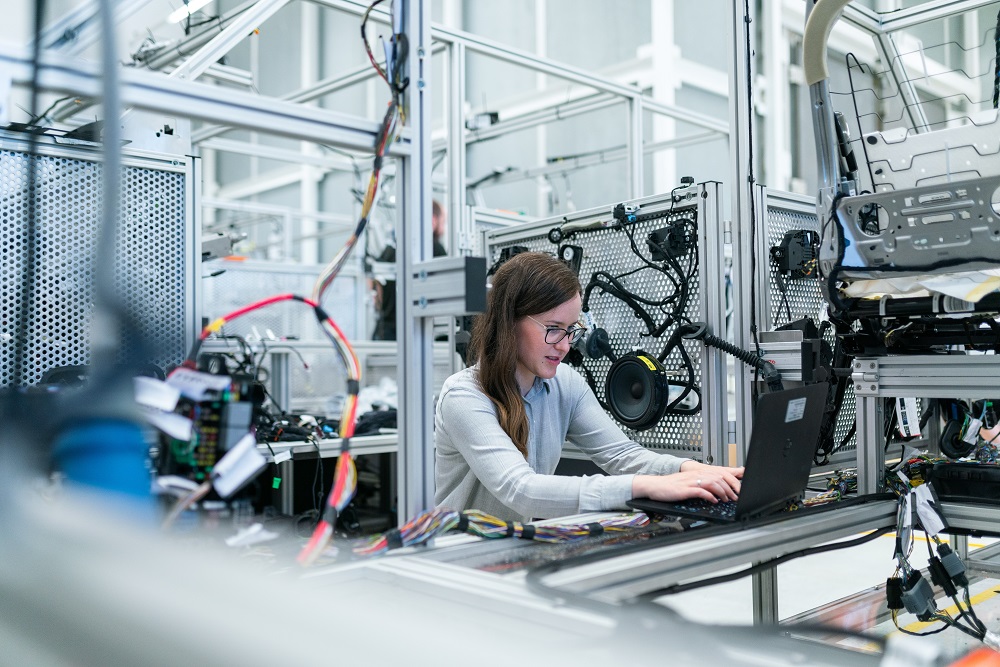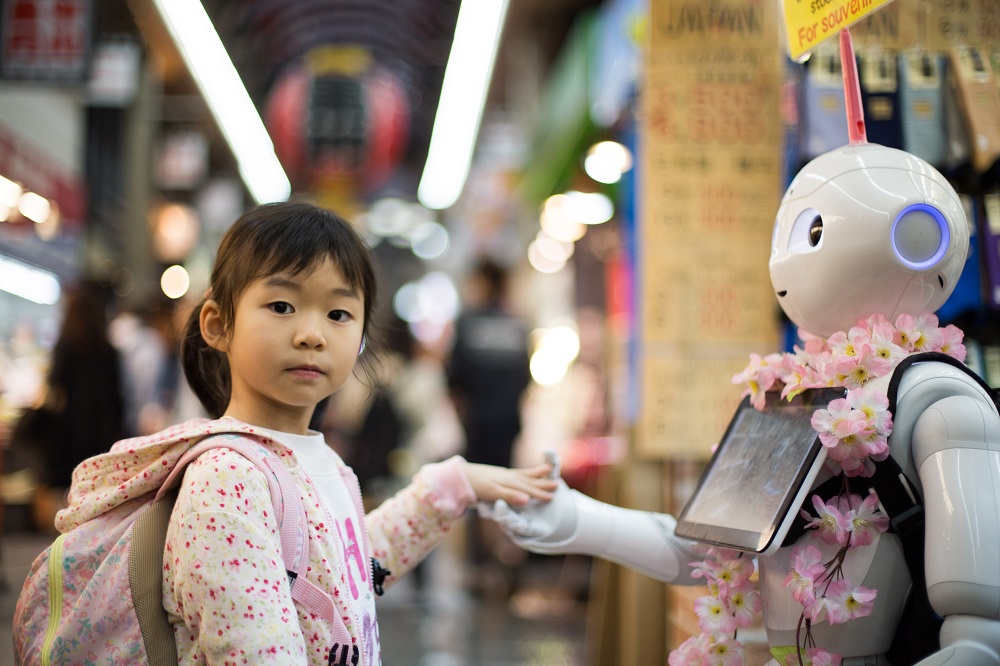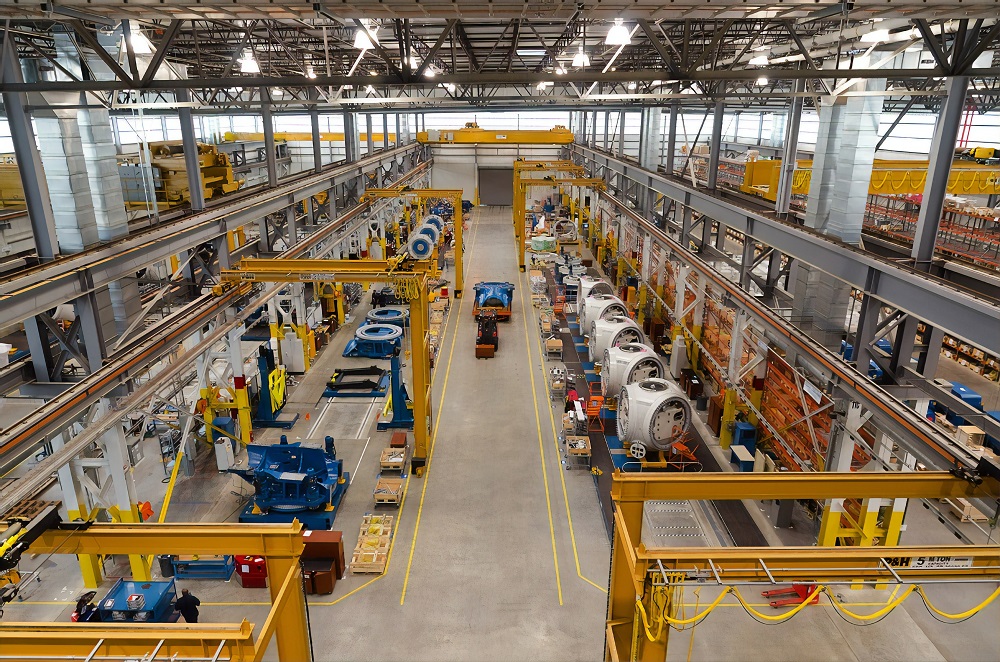In the era of The Fourth Industrial Revolution, all spheres of business and production have been undergoing some crucial changes that have a strong impact on human life. These disruptive transformations remodel the attitudes and perceptions of modern consumers, who, in turn, create challenges for all industries with their growing demands. As the manufacturing industry is one of the biggest and most important ones in every country, it should comply with the world standard and meet the customers’ requirements. So, let’s get to know what’s going on in the industry and what changes are coming this year.
Amazon Effect Isn’t Going to Lose Positions Dictating Its Trends to the Industry
It’s a trend and a challenge at the same time. The Amazon effect implies the rise of customers’ expectations concerning goods and services delivery without the need to go out. Everyone is aware of the flexibility and speed Amazon provides us with everything we want. Thus, every manufacturing field should comply with these rules, otherwise, they will lose the demand. It concerns not only faster delivery but also online services. The Amazon effect puts forward the following requirements to the services manufacturers suggest:
- Convenience (you can find everything you want with user-friendly services and consider customers’ reviews)
- Speed (payment operations are processed out of hand)
- Personalized approach (customers get the selection of related good based on their preferences)
- Frictionless buyer’s journey (people can track their order delivery, apply for the goods replacement, etc.)
Therefore, the manufacturing industry is facing the need for initiating or strengthening its effort in their digital transformation journey. They all now are striving to make their collaboration with clients as Amazon-like as possible. In turn, it sets up new challenges and necessitates engaging innovative techniques in their processes, such as robotics, AI, IoT, and other solutions.
Along with that, digitalization requires proper project management to make sure everything works according to the schedule and no constraints are left behind.
Read more: Project Management Trends in Manufacturing
Internet of Things and Artificial Intelligence: Smart Factories Make Smart Products by Applying 5G
IoT and AI have penetrated almost all spheres of contemporary life. Innovative technologies can be regarded as a beneficial trend for consumers and as a challenge and threat for industries and people employed in these fields.
Due to the growing popularity of the Internet of Things, a lot of new technologies have been produced making modern life as simple as possible and uniting it into the world net. For instance, wearable devices have become just an ordinary thing for most people. Now nobody needs a huge number of gadgets for every specific purpose: modern technology combines everything in one.
Smart factories have become a real trend today and that’s of no surprise. Just think of the plants where everything is connected with software and works as a united mechanism. Data is processed at lightning speed, decisions are made easier and have a reliable ground, workers are secure from accidents – and everything is thanks to the technology.
Let’s take a closer look at digital challenges and trends in the industry.
5G Opens Up New Perspectives for Manufacturing
5G technology is going to bring new opportunities into the industry by erasing Wi-Fi limitations, ensuring a more secure work environment, innovative training and supply chain management. Apart from great opportunities to bring companies better income in shorter periods of time, 5G also contributes to the improvement of supply chain management, planning, and product creation. The increased connectivity with 5G will let manufacturers implement AI technologies to the full. With real-time data collecting, manufacturers will be able to make decisions faster and easier, prevent and avoid failures, and many more. But as assumed by New Equipment Digest, 5G technology is prone to cyberattacks as it has a larger attack surface. It, in turn, like many other trends, creates new challenges on the way to its successful utilization.
Composite 3D Printing
3D printing cannot be called a 2020 trend as its successful utilization has been noticed worldwide throughout these years. But arising and advancing technologies in this field demonstrate their potential to the whole industry. For instance, composite manufacturing using 3D printers is expected to cut off expenses twice as compared to traditional manufacturing. As noted by Autonomous Manufacturing, some companies took the initiative to invest in this technology last year, and in 2020, they’re expected to establish new standards and trends in the area.
Collaborative Robots
A new type of robots capable of collaboration with human beings has already gained its popularity and is going to become a real trend in the near future by occupying all areas in the industry. The so-called cobots are the machines that work together with people and are equipped with special sensors that can detect where their human assistants are, thus they’re safer, and in fact, more easily programmed than ordinary robots.
Therefore, instead of substituting humans with robots one needs more employees to create great cooperation and improve manufacturing efficiency together. A business report by MIT Technology Review states that cooperation with robots reduces the idle time of your employees by 85%. Doesn’t it sound great?
As has been mentioned, cobots are the robots that interact with people, so to engage them into manufacturing processes there should be their human ‘work fellows’, which brings forth new challenges to the industry: lack of resources and skills gap.
Lack of Resources Combined with Skills Gap
As reported by Simutech Multimedia, the US manufacturing industry is going to have 700 thousand job orders within the next 5 years. But due to the fast development of innovative trends in this sector, it requires more employees with the corresponding skills. Unfortunately, hardly a lot of modern graduates are planning to build their careers in manufacturing. As noted by The Manufacturing Institute, about 2.4 million jobs in the manufacturing industry will remain unfilled by 2028 if no actions will be taken.
The situation is getting worse because of the great losses the industry is experiencing because of this gap. According to Simutech Multimedia, these losses amount to 11% of yearly income.
This challenge results in the need for engaging young people to get hired in the field and providing them with special training. The Manufacturing Institute Training Survey has shown that manufacturers invested more than 25 billion dollars for different types of training, and these contributions are expected to double within the upcoming years. In fact, 55% of the surveyed prefer cooperating with educational institutions instead of establishing their own internal educational programs.
At the same time, manufacturers’ efforts to train a highly-qualified workforce are challenged by factors such as working time impediment, scheduling and cost issues.
Therefore, a bunch of things have been done to satisfy the manufacturing job requirements and fill in the skills gap, but still, there are a lot of obstacles to overcome on course to succeed.
Social Responsibility: Eco Trends in Manufacturing
Following the environment conservation policy, the manufacturing industry also adopts world eco trends. As has been said above, almost all trends and challenges in the industry are closely interlinked, and eco trends are no different.
AI for Better Sustainability
The development of artificial intelligence in manufacturing will provide a lot of opportunities to decrease the carbon footprint by analyzing market demands, improving supply chain management, and predicting possible failures in production. This is why investing in the development of AI is one of the most important directions on the way to ensuring manufacturing sustainability.
Advanced Transportation
Since manufacturing industry functioning is impossible without goods transportation, proper and smart logistics is a good weapon in the fight against environmental pollution. Today manufacturers put much effort into this trend by looking for local suppliers, making the number of goods for one transportation session bigger to reduce their total number, and also, of course, engaging AI to analyze and suggest the most optimal logistic ways.
Reducing Waste
In 2020, every industry holds its duty to decrease the amount of plastic and other waste that comes from production. In this regard, the circular economy comes to the front as one of the best ways of environment conservation. Besides, there’s another aspect of this trend: manufacturers themselves massively produce eco goods all over the world that contribute to environment conservation. Today a lot of recycling partnership initiatives appear throughout the world.
Extended Producer Responsibility (EPR) though is not exactly a 2020 trend but it doesn’t lose its positions and still many things are implemented to make manufacturers follow its rules. As stated by Circular, this year, governments are focused primarily on packaging, e-waste, and batteries.
2020 Transformations in Manufacturing Due to Coronavirus
At the beginning of the year, nobody could predict challenges and restrictions the whole world will face in just several months or even weeks due to coronavirus infection. We must acknowledge that every industry has undergone crucial changes and still faces challenges and threats. As manufacturing is one of the largest industries in every country, the pandemic effect can’t stay unnoticed.
Manufacturing Sub-Industries Affected by Coronavirus
According to IBISWorld, who investigated the global impact of Covid-19 on the manufacturing industry across the globe, the most harmful effect has been noticed in the field of durable goods manufacturing (producing electronics, automobiles and things like that), while the pandemic increased the demand for nondurable goods and some medical stuff.
As stated in the report, the US manufacturers of nondurable goods such as food and basic consumer goods, mention the sales increase due to the panic-buying. It refers to such things as toilet paper, sanitizers, and of course, tinned and non-perishable food.
Besides, the pandemic has significantly increased the sales rates of pharmaceutical companies producing immunostimulating drugs, sanitizers, and face masks.
Challenges Caused by Coronavirus
As mentioned in the IPC report about the state of manufacturing in the light of coronavirus, the biggest challenges manufacturers are facing today are associated with
- extremely low demand
- supply shortages
- lack of resources
It becomes obvious that the disruptions listed in other parts of this paper are now just impossible due to the pandemic. Therefore, the biggest challenge the industry will definitely face is recovering from the period of stagnation.
Trends Arising in the Light of Covid-19 Pandemic
Some manufacturers changed their business profiles temporarily to produce the things in need.
For instance, some companies producing alcoholic beverages (Pernod Ricard, Diageo, Anheuser-Busch, and others) and perfumes (Dior, Givenchy, Louis Vuitton, and others) have quickly adapted to the coronavirus pandemic by reorganizing their production. Due to the fact restaurants, bars, and beauty stores have closed all over the world because of preventative measures and thus the lack of demand, they’ve decided to start producing sanitizers instead.
Another example is reorganizing production by many world-renowned companies to deliver plastic face shields for medical workers. What’s interesting, 3D printing technology is successfully applied to this end.
Therefore, nobody can deny the impact of coronavirus on modern life. The question is how fast the manufacturing industry will recover and how successfully all planned trends will be implemented in the future.






